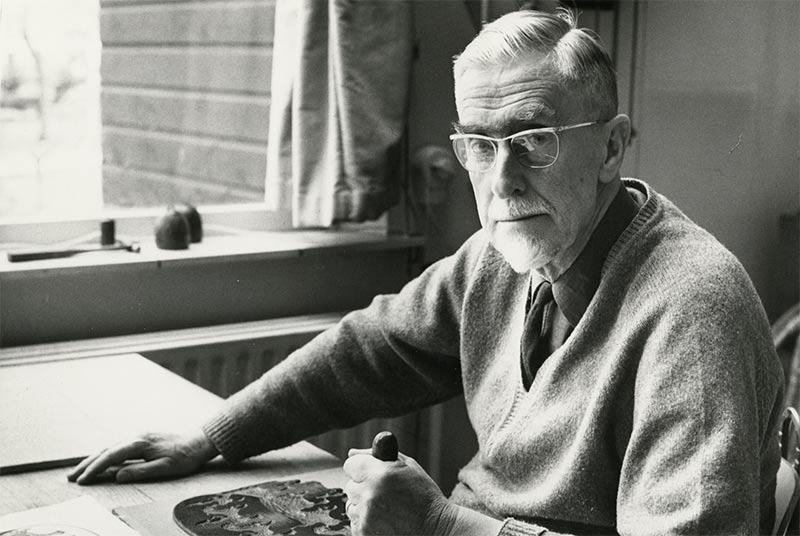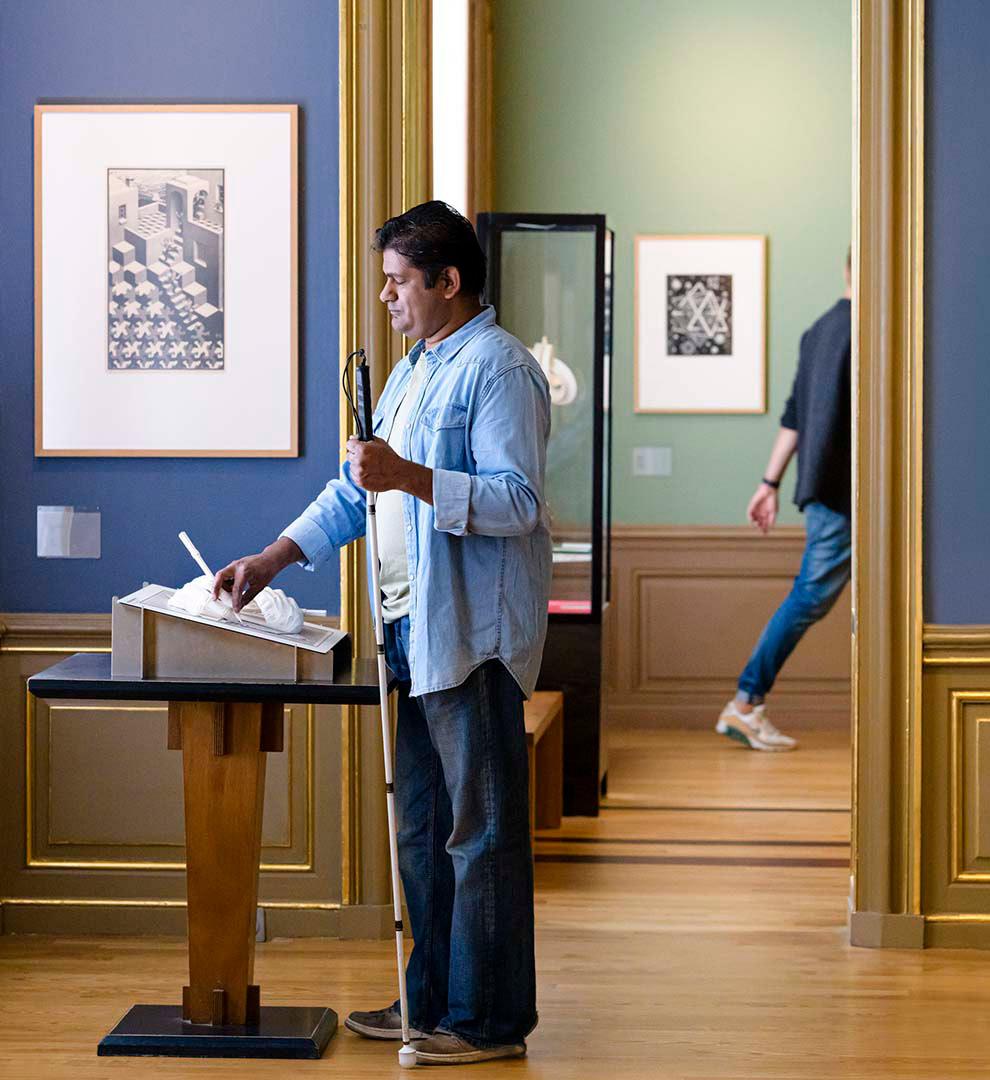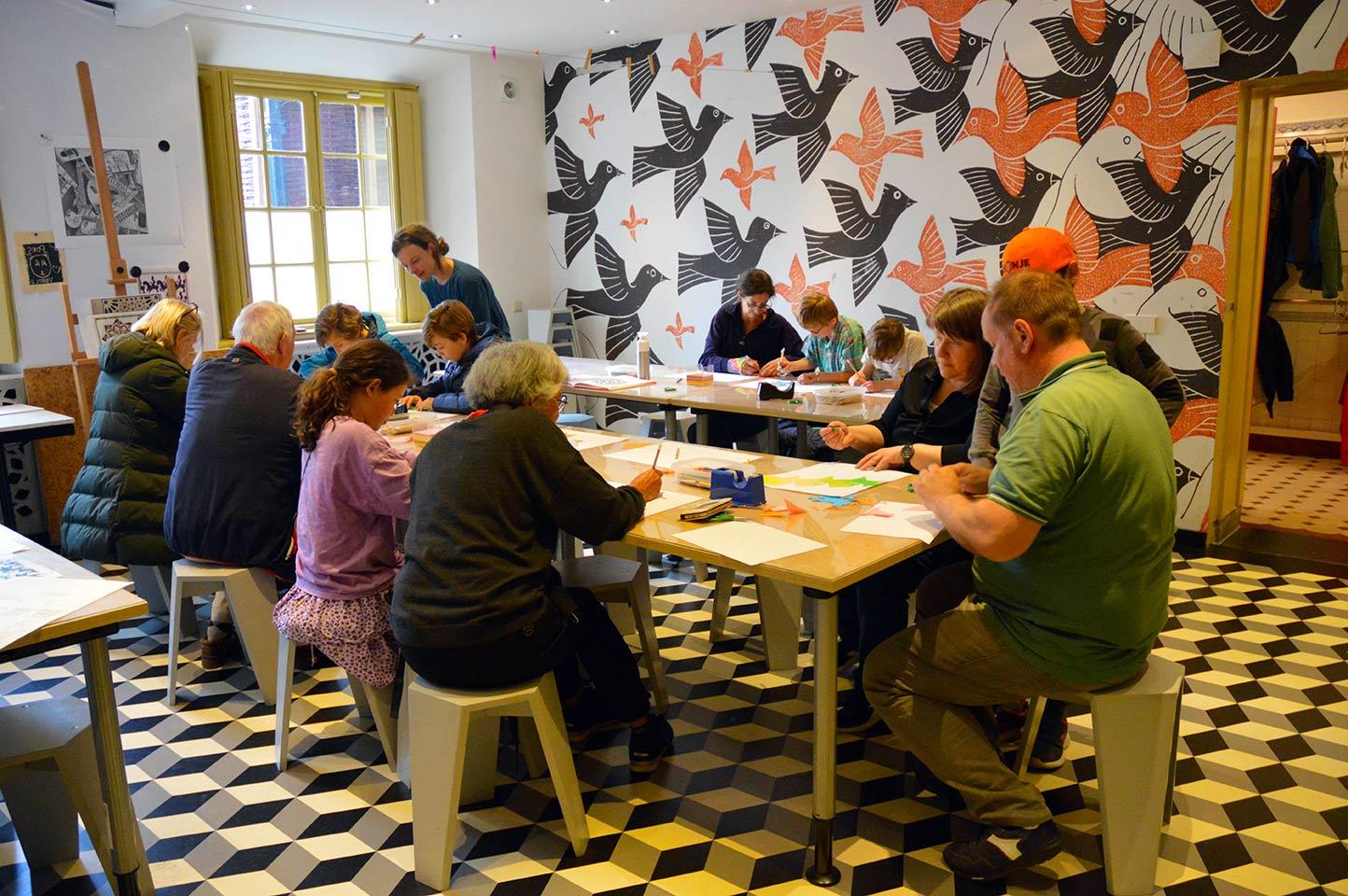Address & route description
Information about our location at the Lange Voorhout and how to get there.
We use cookies and similar technologies on this website to analyze visits and to show you relevant messages on social media. By clicking 'Accept all' you give permission for their placement and for the processing of personal data obtained in this way, as stated in our privacy & cookie statement.
Our privacy & cookie statement:
Below you can choose which types of cookies you allow on the Escher in The Palace website.
Escher in The Palace is a permanent exhibition dedicated to the world-famous, imaginative artist M.C. Escher. Read about our permanent collection and temporary exhibitions.

The latest Escher Today
27 May 2025
How to depict infinity on paper was something that fascinated both M.C. Escher and Albert E. Bosman. Albert Bosman (1891-1961) was an engineer and maths teacher who also became an artist. Mathematics lay at the core of his work. Bosman and Escher were neighbours in Baarn (NL), where they bonded over a mutual interest in mathematical shapes, ideas and principles. The two artists made abstract principles visually accessible to a wider audience.

Exhibition
21 February till 29 June 2025
How to depict infinity on paper? This was a question that exercised the minds of both M.C. Escher and Albert E. Bosman. Albert E. Bosman (1891-1961) was a multitalented engineer who was keen to make mathematics and geometry accessible. He was not only a maths teacher, but also an enthusiastic artist who drew inspiration from his area of expertise. Bosman and Escher were neighbours in Baarn (NL) from 1944 to 1961. They shared a deep fascination with mathematical concepts and both explored limits and the finite and infinite in their work.

News
17 March 2025
From 18 March to 7 September, Escher in The Palace exhibits a special loan, namely a carefully written letter from Escher enthusiast Hendrik Dekker. In the letter, he expresses his admiration for the print Reptiles (1943). The handwritten response by Escher himself is also on display.

About Escher
Escher was a printmaker, but what exactly is that? Read the pages below to find out more about the techniques he used: woodcut, wood engraving, linocut, lithography, etching and mezzotint. Each of them has its own particular qualities, so the prints made using these techniques differ in terms of their complexity and visual character.

20 September 2025 | 09:00 - 11:00
Several times a year, Escher in The Palace organises special guided tours for those who are blind or visually impaired. Before regular opening hours, between 09.30 and 11.00, we open our doors and take you on a tour of a number of masterpieces from the museum’s permanent exhibition.

Wednesdays during school holidays
M.C. Escher was fascinated, maybe even obsessed, by tessellations. He could puzzle for hours, days and months on the many ways a plane could be filled with repetitive figures. Would you like to try this yourself? On Wednesdays during school holidays, we organise a special workshop in which you can make your own tessellation!